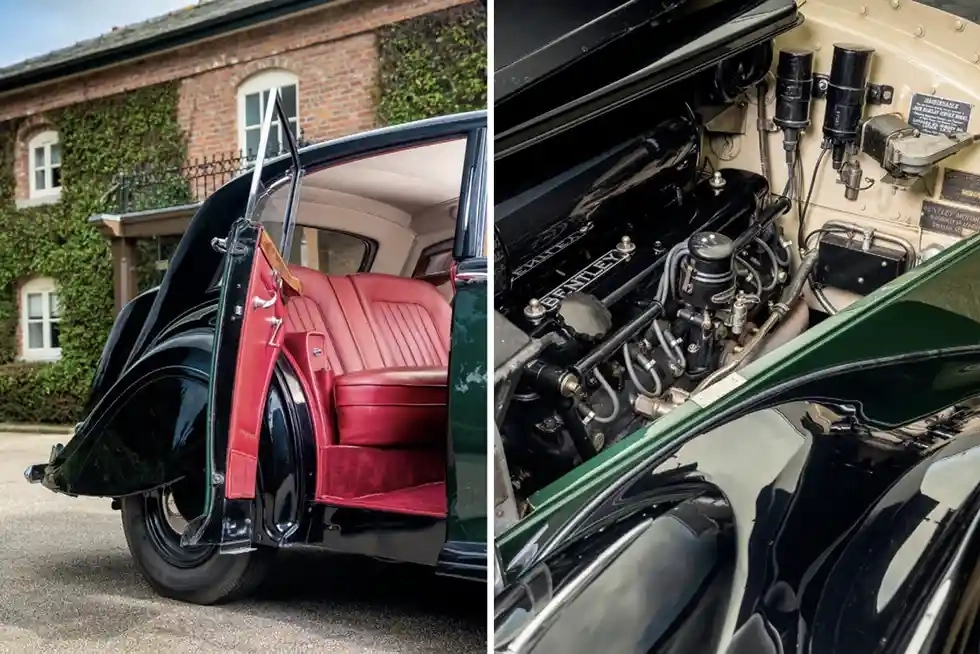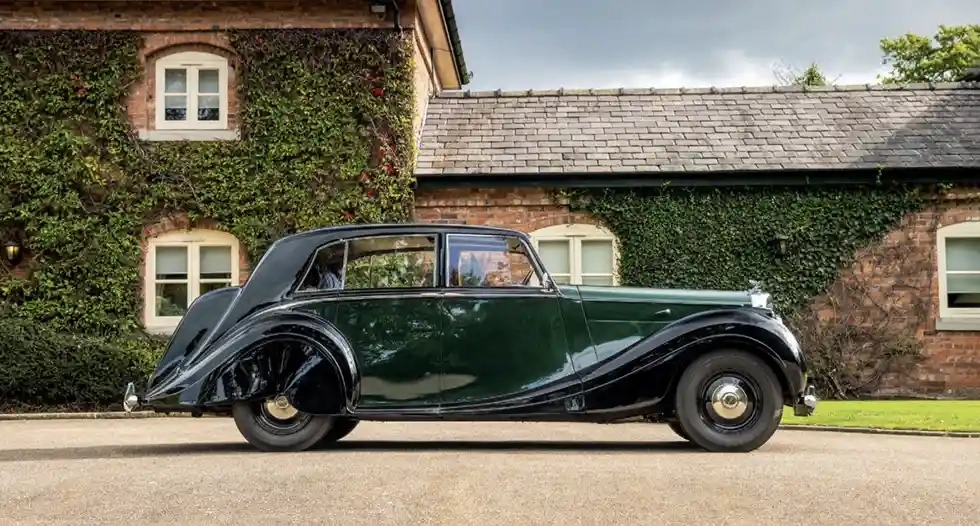Bonus pages
Joomla pages

 OCTANE
Cars and Moto
OCTANE
Cars and Moto
Pinned Items
Recent Activities
-
Artemas DRIVE reacted to this post about 8 months agoA true Italian muscle car
Alfa Romeo Giulia QV High-tech 1000bhp saloon
Fiery new Giulia to focus on interaction over in-car tech
Most potent version of all-new model to pack 1000bhp and AI-powered dynamics
#Alfa-Romeo
The next Alfa Romeo Giulia Quadrifoglio will arrive in 2026 as the firm’s most potent car to date, with power outputs nudging 1000bhp and onboard artificial intelligence that is able to tweak handling characteristics on the fly. The next Giulia will be underpinned by parent company Stellantis’s new STLA Large platform. The structure is said to be “BEV-native”, but it can also host combustion and hybrid powertrains, like the platform Alfa is using for the new Milano crossover it has just revealed (see p6). Stellantis boasts of the Large platform’s game-changing potential, claiming its quickest cars will hit 62mph from rest in around 2.0sec. They will be fitted with 118kWh battery packs, giving range figures of around 500 miles. Alfa CEO Jean-Philippe Imparato previously said the new Giulia Quadrifoglio would offer “around 1000hp” (986bhp), which is a marked rise compared with its most powerful saloon thus far, the 533bhp GTAm.
The Dodge Charger Daytona, the STLA Large platform’s debut model, gives clues to what cooking versions of the Giulia – which is expected to be a close relation – could offer. It uses an electric motor on each axle, combining for 496bhp in the entry-level R/T car and 670bhp in the range-topping Scat Pack. Its 93.9kWh battery pack can be recharged from 20- 80% in a claimed 27 minutes, at rates of up to 183kW. Imparato said this will be reduced to “within 18 minutes” for the Giulia, whose electricals run at 800V rather than the 400V in the Charger Daytona. Alfa has committed to “100% zero-emission sales in 2027”, but it’s possible that, due to the watering down of Euro 7 emissions legislation, the next Giulia could also offer a combustion engine. Speaking last September, a month before Euro 7 was softened, product chief Daniel Guzzafame said the brand’s EV-only transition would depend on the legislation. “No company will invest to meet Euro 7” he added recently, speaking to Australian publication Drive. “That means only one thing: you can draw the line from there; it’s just not sustainable. It will depend on the regulation.” Separately, Imparato suggested Alfa would be open to keeping combustion-engined cars on sale for longer if legislation allowed. The Charger Daytona, for example, is offered with a combustion engine, in its case a 550bhp twin-turbo 3.0 straight six, which would be a logical successor to the 2.9-litre V6 used by today’s hot Giulia. However, Imparato has previously said the existing V6 could survive following the weakening of the Euro 7 proposal. Regardless of what is under the bonnet, the next Giulia also promises to unlock extra dynamic potential thanks to a new on-board computer. Called STLA Brain and making its debut next year on the next-generation Alfa Stelvio, it will use artificial intelligence to tweak the handling to a driver’s preference. Overthe- air software updates will provide further advances during the car’s lifespan, with the potential to unlock extra power, range or charging speed. The Brain’s hardware also has ramifications for the in-car experience: Imparato has suggested it allows for a ‘ghost car’ to be projected onto a head-up display to show the position you should take on the road. He added, however, that Alfa won’t try to outgun its German rivals on in-car entertainment. “My customers aren’t looking for metre-wide infotainment screens in their cars or 200 digital assistance systems to switch on and off,” he said. The Giulia’s interior will instead put a focus on the interaction between car and driver by reinventing several design cues inspired by Alfa’s heritage. The double-cowled ‘cannocchiale’ (telescopic) instrument panel will return, for example, displaying only the essential information about the state of the car. Imparato said: “What I don’t need is to know the weather for three weeks’ time. I don’t care – I’m here to drive.” A synthetic exhaust note, as featured on sibling brand Abarth’s 500e, is not on the cards for any electric Alfa. “I will never allow fake noise, but we might put vibrations back into an [electric] car,” Imparato said, hinting at the potential for synthesised gearshifts and ‘revs’. Visually the Giulia will straddle conventional segments, having been described by Imparato as a “tipping point” between a saloon and an estate. He has also been emphatic in stating that it will remain a low-slung proposition, which would leave the taller Stelvio SUV to capitalise on SUV sales. “I don’t want to become an SUV brand even if the world is switching to SUVs,” Imparato added. The Giulia will reintroduce several design cues from historic Alfa Romeos, most notably including the abrupt ‘Coda Tronca’ rear end. Nonetheless, it will remain a thoroughly modern proposition. Design boss Alejandro Mesonero-Romano warned: “We have to be careful how much inspiration we take from the past. As designers, a little like chefs, the aim is to mix classic ingredients into a ‘new sauce’ that today’s generation will respond to.” The new Giulia will replace the current car on the line at Stellantis’s plant in Cassino, Italy, where it will join the next Stelvio and the Maserati Grecale. A new Maserati Quattroporte, also based on the STLA Large structure, had been scheduled to enter production at Cassino next year, but this has been postponed until 2028 for further development and cost reductions. In the meantime, Alfa Romeo is set to expand its line-up significantly with ambitions of global growth. Its first series-production electric car, the Milano SUV, is due in dealers in a matter of months, and the new-generation Stelvio will follow next year. An electric Porsche Cayenne rival is due in around 2027, and senior executives have suggested it could be joined by several niche models, following the launch later this year of the £1.7 million, highly limited 33 Stradale supercar. Mesonero-Romano has hinted that the company may revive the Autotutto van as an MPV for the Chinese market, and Imparato has openly discussed his ambition to revive both the GTV and the Spider Duetto as EVs. The firm has stressed, however, that a reborn Spider will only be possible once Alfa has a five-strong line-up of more mainstream-oriented models on sale.
Post is under moderationStream item published successfully. Item will now be visible on your stream. -
Artemas DRIVE reacted to this post about 8 months agoDiscover the #Lexus Primes 'LFR' V8 Supercar: A Masterpiece of Engineering
The Lexus primes ‘LFR’ V8 supercar is set to redefine the boundaries of automotive performance and luxury. With a powerful V8 engine, this supercar promises unmatched speed, agility, and driving experience. Stay ahead of the curve with the latest advancements in automotive technology and design embodied in the Lexus 'LFR'. Discover the ultimate blend of power and sophistication with the Lexus primes ‘LFR’ V8 supercar.
Post is under moderationStream item published successfully. Item will now be visible on your stream. -
Artemas DRIVE reacted to this post about 8 months agoChina Keeps #Renault Twingo on Track: A Key to Future Success
Renault's strategic decision to leverage the burgeoning Chinese market is paying off as China keeps the Renault Twingo on track for continued success. The iconic compact car, known for its distinctive style and efficiency, is gaining traction among Chinese consumers who value both affordability and innovation.
Why China is Crucial for Renault Twingo's Journey
China's vast and dynamic automotive market offers unparalleled opportunities for growth. With a rising middle class and increasing urbanization, there is a growing demand for compact, city-friendly vehicles. The Renault Twingo, with its modern design and eco-friendly features, perfectly aligns with the preferences of Chinese car buyers.
Enhancing Presence in the Chinese Market
Renault is investing heavily in marketing and local partnerships to strengthen its foothold in China. By aligning with Chinese automotive trends and consumer behaviors, Renault ensures that the Twingo remains relevant and competitive. These efforts are crucial as China keeps Renault Twingo on track towards becoming a staple in the urban vehicle segment.
Innovation and Adaptation
Adapting to the unique requirements of the Chinese market, Renault has introduced specific enhancements to the Twingo. These include tech upgrades, improved fuel efficiency, and localized features that cater to Chinese consumers' tastes. This adaptability is a significant factor in why China keeps the Renault Twingo on track and thriving.
Conclusion
The symbiotic relationship between Renault and the Chinese automotive market exemplifies how global brands can thrive by understanding and integrating into local markets. As China keeps Renault Twingo on track, it also sets a precedent for other international automotive manufacturers aiming for success in China.Post is under moderationStream item published successfully. Item will now be visible on your stream. -
Artemas DRIVE reacted to this post about 8 months agoBMW's New Entry-Level EV: A Game Changer in Electric Mobility
#BMW has introduced a revolutionary new entry-level EV that is set to redefine the standards in electric mobility. This latest addition to BMW's impressive lineup offers an affordable yet high-performance option for those looking to make the switch to electric vehicles.
Key Features of BMW’s New Entry-Level EV:
Innovative Design:
The new entry-level EV boasts a sleek, modern design that combines elegance with efficiency. BMW’s commitment to aesthetic excellence ensures that this vehicle is not only environmentally friendly but also visually appealing.
Advanced Technology:
Equipped with the latest in automotive technology, BMW’s new entry-level EV features a state-of-the-art infotainment system, cutting-edge safety features, and seamless connectivity options. Drivers can enjoy a futuristic driving experience with the confidence that they are supported by advanced tech innovations.
Exceptional Performance:
BMW's engineering excellence shines through in the performance of this new entry-level EV. It offers a robust driving experience with impressive acceleration, handling, and range. This EV is designed to provide a smooth, dynamic ride that rivals traditional gasoline-powered vehicles.
Sustainable and Efficient:
As part of BMW’s commitment to sustainability, the new entry-level EV is engineered to be highly efficient and eco-friendly. Its electric powertrain produces zero emissions, contributing to a cleaner environment and reducing the carbon footprint of its drivers.
Affordability:
One of the standout features of BMW’s new entry-level EV is its affordability. This model makes it easier for more consumers to access high-quality electric vehicles without compromising on performance or luxury.
Why Choose BMW’s New Entry-Level EV?
BMW’s new entry-level EV is perfect for those looking to embrace the future of automotive technology. With its combination of style, performance, and affordability, it offers a compelling option for eco-conscious drivers. By choosing this vehicle, you are not only investing in superior engineering and design but also supporting a more sustainable future.Post is under moderationStream item published successfully. Item will now be visible on your stream. -
Embarking on this exhilarating journey with a 1961 Jaguar E-type OTS roadster is nothing short of a thrilling escapade. While the dawn is yet to break, our presence in this park raises eyebrows among fellow visitors. A warm greeting to all! Allow us a moment as we prepare to unleash the roaring engine of this classic beauty. Engaging the kill switch, reconnecting a few components, prodding the starter, and there it is— the unmistakable growl of a 1961 Jaguar E-type OTS roadster!
#Jaguar
Typically, a Jaguar E-type offers a harmonious exhaust note, a blend of crispness and burble. But this one, with its straight-six engine, is gloriously loud and captivating. The temptation to rev the throttle is real, coupled with the urge to share excited remarks about this masterpiece.
Picture this: a serene woodland setting in central Lisbon, now interrupted by our 1961 Jaguar E-type OTS roadster. Surprisingly, this very spot once echoed with the thunderous sounds of Grand Prix cars, having hosted a Formula 1 World Championship round in 1959. This is also where our 'flat floor' roadster showcased its dominance in the early 1960s, winning races and leaving a legacy. From rallies to the Angolan Grand Prix, this resilient machine has seen it all and still races with fervor today, albeit briefly before returning to its modern-day residence in London.
Historically speaking, the E-type caused quite a stir upon its debut. The Malcolm Sayer-designed, Sir William Lyons-refined silhouette became an instant legend. Inspired by the D-type and the E1A and E2A prototypes, the E-type epitomized Jaguar's sporting prowess. Aerodynamics and top speeds aside, its breathtaking design was its biggest asset. And while no production E-type reached the 150mph mark as The Autocar achieved with a modified version, its performance was still remarkable for its time.
The 1961 Jaguar E-type OTS roadster wasn't just about speed; it boasted advanced engineering, including monocoque construction and independent rear suspension. Its racing debut was slightly delayed due to supply issues, but when it hit the tracks, it left an indelible mark. Notably, at the Goodwood Easter Meeting in 1961, drivers Graham Hill and Roy Salvadori showcased its prowess.
Hill's victory and Salvadori's third-place finish were compelling enough for Ferrari to take notice. Rumor has it that the iconic 250 GTO was developed in response to the E-type's threat. However, despite its racing successes, the E-type mainly excelled at the national level.
One such 1961 Jaguar E-type OTS roadster, according to the Jaguar Daimler Heritage Trust, was completed on 16 October 1961. Adorned in Opalescent Silver Grey with a dark blue interior, it arrived in Portugal as the fifth E-type, with a few enhancements including a high-compression head. Its racing debut in January 1962 marked the beginning of a series of victories, often driven by Manuel Nogueira Pinto, a renowned Portuguese driver.
Pinto's association with the 1961 Jaguar E-type OTS roadster is legendary. From victories at the Montes Claros circuit to triumphs in Mozambique, Pinto's skill and the E-type's performance were a match made in racing heaven. Despite its eventual retirement from frontline racing in 1963, the E-type continued to make its mark in various competitions.
Fast forward to 2019, and the 1961 Jaguar E-type OTS roadster found a new home with British competitor Marc Gordon. Prepared meticulously by Nick Finburgh for endurance events, this historic racer remains immaculate and ready to roar.
The thrill of driving this 1961 Jaguar E-type OTS roadster on historic tracks is incomparable. Its agile handling, immediate throttle response, and distinctive exhaust note make it a joy to drive, even amidst today's traffic challenges. While its vintage brakes and compact size may pose occasional challenges, there's no denying the charm and allure of this classic masterpiece.
In conclusion, whether you're a seasoned enthusiast or new to the world of vintage cars, experiencing the 1961 Jaguar E-type OTS roadster is bound to leave a lasting impression. Its rich history, unmatched performance, and timeless design make it a true automotive icon.Post is under moderationStream item published successfully. Item will now be visible on your stream. -
Artemas DRIVE reacted to this post about 10 months ago#Venturi #Alpine - In the 1990s, France produced a showdown between two glassfibre-bodied supercoupés with boosted Renault V6s: the Alpine A610 and Venturi Atlantique. Do they deserve to remain in perpetual obscurity?Post is under moderationStream item published successfully. Item will now be visible on your stream.
-
Artemas DRIVE reacted to this post about 10 months ago#Porsche
The lengths we’ll go to
More often than we would probably like to admit, amazing stories fall into Octane’s lap and a tentative email with a picture attachment sets in motion a chain of events that ends with you reading about a very special car. Every one of those easy wins, however, is counterbalanced by something that takes a lot more time, effort and, inevitably, money to put together. And in 28 years in this game I cannot remember a more fraught process than our collective quest to get a Schuppan 962 CR into Octane. The reason for wanting to is obvious – great car, great story, plus the compulsion finally, and for the first time, properly to tell the world how this remarkable Le Mans car for the road measures up to its billing.Post is under moderationStream item published successfully. Item will now be visible on your stream. -
Stream item published successfully. Item will now be visible on your stream.
-
Stream item published successfully. Item will now be visible on your stream.
-
Stream item published successfully. Item will now be visible on your stream.
There are no activities here yet




































